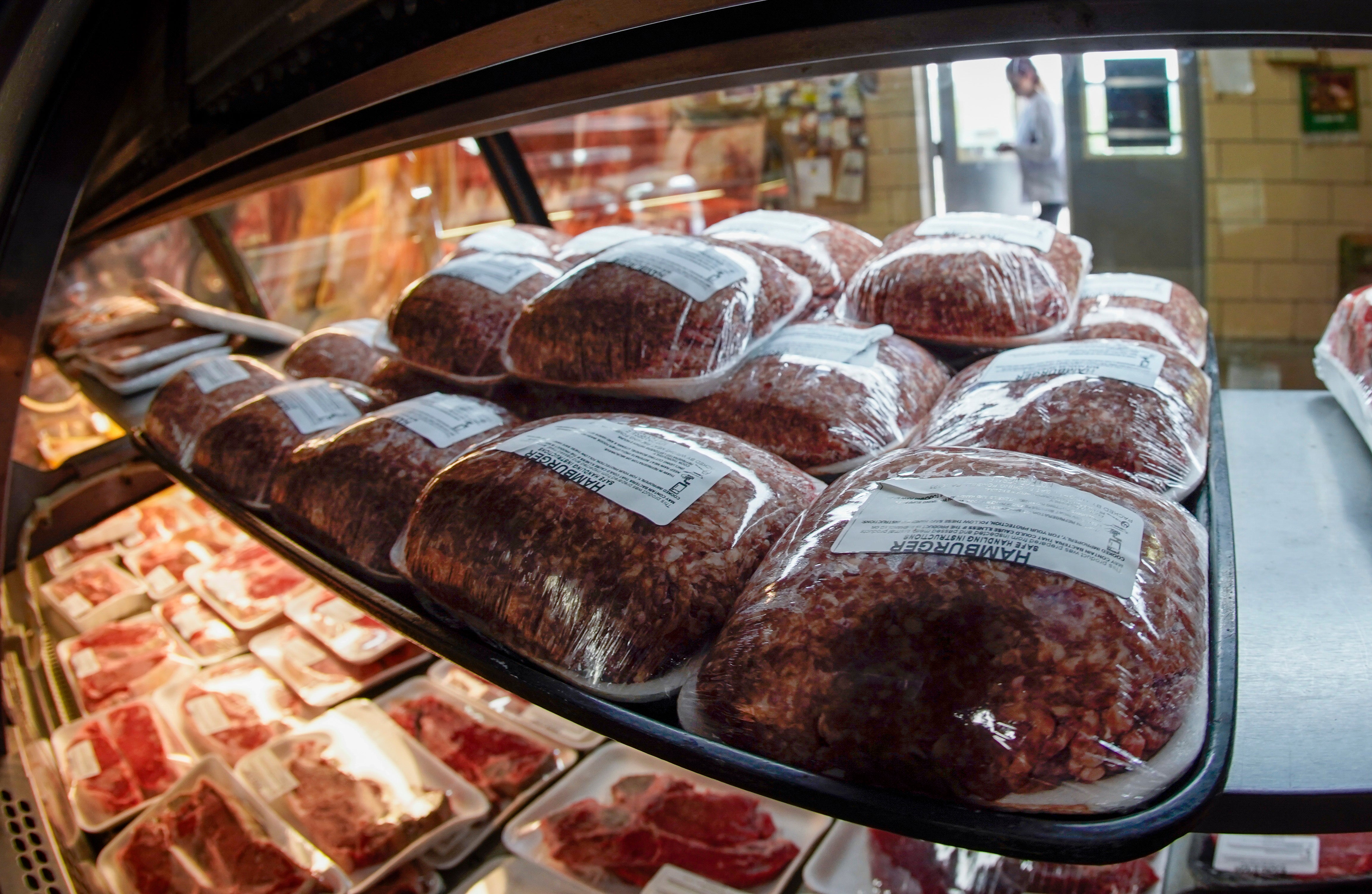USDA says more than $200M will help meat processors expand
The Agriculture Department announced more than $223 million in grants and loans Wednesday to help small and mid-sized meat processing plants expand to help boost competition in the highly concentrated industry

Your support helps us to tell the story
From reproductive rights to climate change to Big Tech, The Independent is on the ground when the story is developing. Whether it's investigating the financials of Elon Musk's pro-Trump PAC or producing our latest documentary, 'The A Word', which shines a light on the American women fighting for reproductive rights, we know how important it is to parse out the facts from the messaging.
At such a critical moment in US history, we need reporters on the ground. Your donation allows us to keep sending journalists to speak to both sides of the story.
The Independent is trusted by Americans across the entire political spectrum. And unlike many other quality news outlets, we choose not to lock Americans out of our reporting and analysis with paywalls. We believe quality journalism should be available to everyone, paid for by those who can afford it.
Your support makes all the difference.The Agriculture Department announced more than $223 million in grants and loans Wednesday to help small and mid-sized meat processing plants expand to help boost competition in the highly concentrated industry.
The effort is expected to increase cattle and pig slaughter capacity by more than 500,000 head a year and help poultry plants process nearly 34 million more birds while adding more than 1,100 jobs mostly in rural areas where the plants are located.
The Biden administration wants to add meat processing capacity to give farmers and ranchers more options of where to sell the animals they raise while hopefully reducing prices for consumers by increasing competition because the biggest companies now have so much power over pricing. In beef, the top four companies control 85% of the market while the top four firms control 70% of the pork market. The four biggest poultry processors control 54% of that business.
“We’re looking forward to these projects taking hold and creating new opportunity and new choice for producers and consumers,” U.S. Agriculture Secretary Tom Vilsack said.
The USDA's announcement Wednesday, combined with a trip to Omaha, Nebraska, where Vilsack plans to tour a beef processing plant, comes as President Joe Biden is highlighting his achievements to voters before the Nov. 8 midterm elections. Several of the administration's recent announcements have targeted rural areas in states that generally support more Republicans than Democrats.
Vilsack said the Greater Omaha Packing company will use its grant to expand beef processing capacity by 700 head per day and add 275 more jobs. The Omaha company is one of the biggest of the 21 grant recipients nationwide that will share $73 million.
Some of the other grants will go to helping Pure Prairie reopen an idle poultry processing plant that will employ hundreds of people in Charles City, Iowa. And the Cutting Edge Meat Company in Leakesville, Mississippi, expects to be able to reduce its current six-month backlog for beef and pork processing by expanding its capacity.
The other $150 million of funding announced Wednesday will go to 12 loan programs that will help independent meat processors continue operating as they work to expand. And applications for additional grants and loans are being accepted now for another round of spending next year.
The big meat processors maintain that supply and demand factors — not industry concentration — drive prices for beef, pork and poultry products. And they say processing capacity has been restrained by the ongoing shortage of people to work at these plants, which are typically in rural areas with small populations.
The worker shortages were highlighted during the pandemic when a number of major meat processing plants had to shut down as the virus tore through them because so many workers became ill or had to quarantine. That contributed to shortages of meat in grocery stores that drove up prices.
The price paid for the animals that are slaughtered has long been a point of contention because even as meat prices soar with inflation and tight capacity in the industry, farmers and ranchers receive a relatively small share of the profits. Federal data show that for every dollar spent on food, the share that went to ranchers and farmers dropped from 35 cents in the 1970s to 14 cents recently.
Agricultural economists have said that smaller processing plants also might have a hard time competing with the major meat companies because they are far less efficient than the big plants run by companies like Tyson, Smithfield Foods, Cargill, JBS, Hormel and Purdue Farms.
In addition to these loans and grants, the White House has also adjusted administrative rules to make it easier for farmers and ranchers to report concerns or sue over anticompetitive behavior. Officials are also planning new rules to label meat as a U.S. product to differentiate it from meat raised in other countries.